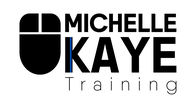Social media is everywhere and used by a lot of people. We need to ensure that it’s available to everyone to be as inclusive as possible. Here are a few tips on how to increase your social media accessibility.
General Social Media Accessibility Tip
Hashtags
Words or phrases that many social media platforms use to search and group topics together all starting with the hash symbol ‘#’.
Capitalise the first letter of each word if your hashtag to make it easier to read, also know as CamelCase.
#LearningIsForEveryone
Ensure all Pictures have Alt Text
There’s a wide range of people who use screen readers to help them access your content. When it gets to an image, make sure that there is something to read out that explains the image.
Use the Alt-Text or sometimes known as a description.
Tips for writing descriptive alt-text:
Convey the content: There’s a huge gap between “Image of a chart,” and something like, “A bar chart illustrates that there has been a year-over-year increase in forest fires, peaking at 100 this year.”
Skip saying “image of” or “photograph of.” The Royal National Institute of Blind People says most screen readers prefer you don’t.
Mention colour if it is important to understanding the image.
Share humour. Descriptive text doesn’t have to be overly formal and should do its best to express what’s funny.
Transcribe text. If the image has copy that is central to its meaning, make sure you include it in the description.
Learn from the best: WebAIM offers tips and several examples, and copywriter Ashley Bischoff’s presentation is very helpful.
Don’t forget GIFs. Twitter recently made alt-text an option for GIFs. If the platform does not support alt-text, include a description in the action.
Inclusive Design for Social Media – HootSuite Blog
Limit emoji and emoticon use
Emojis and emoticons get read aloud by assistive technology. That means people will hear things like “loudly crying face” or “face with closed eyes and stuck out tongue.”
Link shorteners
Link shortening services not only save you characters in your posts, but they help limit the raw characters a screen-reader has to read aloud.
I use Bit.ly for all my tweets.
Make link text descriptive
When you add a link, you may want something different to appear on the screen, instead of the actual link. While this is fine, please don’t use ‘Click Here’.
Let people know what will happen when they click – does it go to another page, another site, download something?
It needs to be clear how this link is different from the others, as some assistive tools can read out just the link text.
Best practice for all links, not only for accessibility.
Tweets
Twitter and Tweetdeck make it easy to add descriptions for the alternative text – Alt-Text.


Take a look at my Accessibility page to see how I’ve implemented some these tips into this site. Follow me on social media to see them in action.
Latest Posts
- Do you want computer peripherals with that?You’ve sorted out the hardware, the best device and software but have you thought about any additional computer equipment that you might need for your business a.k.a. the computer peripherals? The first thing is to agree on what is a ‘computer peripheral’. The definition that appears when you google it, is: A peripheral device, or… Read more: Do you want computer peripherals with that?
- Improve your results with these advanced search techniquesWe’ve now looked at searching, and hopefully you’re finding your files easily. But how often are the ones that you’re looking for at the top of the results list? Let me share some advanced search techniques with you. Wildcard symbols How often have you remembered part of the filename, but not all of it? There… Read more: Improve your results with these advanced search techniques
- Are you searching your files to save time?How often have you spent hours looking for a file that you know is saved somewhere? Then my question is why? Searching your files is a quicker way to find what you’re looking for! OK, OK, I can hear you saying “I already know how to search Michelle!” But do you? Really? I’m talking about… Read more: Are you searching your files to save time?
- Talking without the video = podcastMaybe you’ve got a lot to say (not just supercalifragilisticexpialidocious) but you don’t like seeing or recording yourself. In this case take a look at the podcast option. Sure you’re recording your voice but that’s it! What’s a podcast? Well a dictionary definition is “a digital audio file made available on the internet for downloading… Read more: Talking without the video = podcast
- Is a video channel more your thing?Maybe your expertise is better shared through a video channel? If your skills are best when you show or demonstrate things to people then this may be the perfect channel option for you. I’m not going to insult you by explaining what a video is, but let’s talk about a few things related to a… Read more: Is a video channel more your thing?






